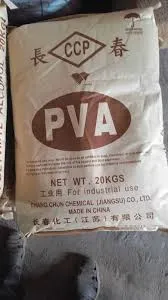The Role of HPMC Detergent in Modern Cleaning Solutions
In recent years, the demand for effective and environmentally friendly cleaning solutions has surged. One of the notable substances that have found its way into both household and industrial cleaning products is Hydroxypropyl Methylcellulose (HPMC) detergent. This article explores the properties, advantages, and applications of HPMC detergent, highlighting its growing significance in the cleaning industry.
What is HPMC Detergent?
HPMC is a plant-derived cellulose ether, known for its excellent water retention, thickening, and film-forming properties. When used as a detergent, HPMC contributes to a product’s viscosity and enhances its cleaning capabilities. It is particularly advantageous due to its compatibility with a wide range of surfactants, which allows it to serve as an effective additive in various cleaning formulations.
Advantages of HPMC Detergent
One of the primary benefits of HPMC detergent is its biodegradability. Unlike many traditional detergents that can lead to environmental pollution and waterway contamination, HPMC is derived from natural materials and breaks down effectively without leaving harmful residues. This makes it an ideal choice for eco-conscious consumers and companies striving for sustainability.
Additionally, HPMC exhibits low toxicity levels, making it safe for household use. Its non-irritating properties are especially beneficial in products designed for sensitive skin or for use in inhabited spaces where children and pets are present. The ability to produce fewer allergens and irritants is driving its adoption in various personal care and cleaning applications.
hpmc detergent

Applications of HPMC Detergent
HPMC detergent is used in a variety of cleaning products, ranging from laundry detergents to surface cleaners. In laundry formulations, HPMC enhances the cleaning power while helping to maintain the fibers of fabrics, preventing them from wearing down over time. This property not only prolongs the life of clothing but also decreases the frequency of washings needed, thereby conserving water and energy.
In surface cleaning applications, HPMC acts as a stabilizer and thickener, which helps in providing even coverage of cleaner on surfaces while enhancing the removal of dirt and grime. This is particularly useful in industrial settings, where tough cleaning tasks require durable and effective solutions.
Furthermore, the cosmetic industry has also begun to recognize the value of HPMC. Its film-forming ability allows it to be utilized in various personal care products, providing a smooth application and enhancing the delivery of active ingredients to the skin.
Conclusion
As we move towards a more sustainable and health-conscious society, HPMC detergent presents itself as a formidable alternative to traditional cleaning agents. Its combine qualities of effectiveness, safety, and environmental friendliness reinforce its role in the evolution of cleaning solutions. With ongoing research and development, HPMC detergent is set to become a staple in homes and industries alike, transforming the way we think about cleanliness and sustainability.
-
Rdp Powder: Key Considerations for Wholesalers in the Building Materials IndustryNewsJul.08,2025
-
Key Considerations for Wholesalers: Navigating the World of Hpmc - Based ProductsNewsJul.08,2025
-
Hpmc Detergent: Key Considerations for WholesalersNewsJul.08,2025
-
Key Considerations for Wholesalers: China Hpmc For Tile Adhesive, Coating Additives, Concrete Additives, and MoreNewsJul.08,2025
-
Crucial Considerations for Wholesalers: Navigating the World of Construction MaterialsNewsJul.08,2025
-
Key Considerations for Wholesalers Sourcing Additive For Cement, Additive For Concrete, Additive For Putty from Additive Manufacturer Shijiazhuang Gaocheng District Yongfeng Cellulose Co., Ltd.NewsJul.08,2025




